Kia Niro EV Vs Chevrolet Bolt EUV Comparison

Affordable EVs do exist, and these are two of the best. It’s the Kia Niro EV vs Chevrolet Bolt EUV comparison.
In the white corner we have the Kia Niro EV. Wearing a substantially different design than the outgoing model, this second-generation Niro once again comes in full-electric, plug-in hybrid, and pure hybrid forms. There’s more space, more tech, and a massaged electric powertrain that promises up to 253 miles (407 km) of range.
Over in the blue corner stands the Chevrolet Bolt EUV. That Stealers Wheel-approved name should tell you what you need to know: this is the self-styled Utility version of Chevy’s affordable, spunky Bolt EV. It showed up for 2022, anchoring the Bow Tie’s electric SUV lineup before the floodgates open later this year.
Both of these models sit on the pointy end of our list of Cheapest Electric SUVs out there. So which one is better to live with, especially in a week that saw a solid amount of snow? Managing editor Mike Schlee and I dug in to find out.
Get a Quote on a New Kia Niro EV and Chevrolet Bolt EUVInterior and Cargo Space
Niro EV: The Niro’s cabin has a techy, cockpit-like feel, with plenty of inspiration from big brother EV6. The angular dashboard looks positively futuristic, as the door panels rise up and then wrap around the far corners. The hints of ambient lighting in the dashboard provide visual interest but not distraction. A sizeable center console holds the shiny switchgear. Kia has toyed with texture here in a way few other mainstream brands do, and we generally enjoy it—especially as many of the materials are recycled. There is a lot of piano black, though. The whole center console is made of the stuff, and large portions of the doors are, too. The door cards are the most obvious place Kia saved money in the Niro.
Seat comfort is generally pretty good, with the synthetic leather thrones fooling any passengers. The front seats are supportive, and kept us comfortable on longer trips. The second row is the more accommodating of this pair, with more headroom (38.1 inches / 967 millimeters), and roughly the same level of legroom (36.9 in / 938 mm). The floor is noticeably higher, however, so the position might be uncomfortable for taller riders. The Kia also misses out on the extended glass roof of the Chevy, so it’s a darker space.
SEE ALSO: 2023 Kia Niro EV and Hybrid First Drive ReviewThe Kia holds a clear advantage in the cargo capacity race. “Huge cargo area for a small vehicle, especially an EV,” says Schlee, “but the finishes in there leave something to be desired.” There’s a noticeable drop from the load lip to the storage space, and the seats don’t fold parallel to it, but the Niro is positively cavernous at 22.8 cubic feet (645 liters). That expands to 63.7 cubes (1,804 L) with the seats down.
Bolt EUV: There are two aspects that immediately stick out in the Bolt EUV cabin. For starters, it is noticeably more narrow than the Niro. Second, the blue leather seats are cool as hell.
SEE ALSO: 2022 Chevrolet Bolt EV Review: Affordable Electric Does ExistThe narrowness does make the Chevy feel a little snug, but the low window line and big glass roof help alleviate that. The Bolt dashboard design is more traditional, big on logic but short on wows. The plastics lower down the dashboard and (especially) on the doors feel like remnants of Old GM: cheap and not particularly cheerful. That tiny center console leaves little surface storage room, though Chevy gains points for opening up the space underneath, enough for a small bag.
Seat comfort has been a notorious Bolt weak spot, and while the ’22 revisions addressed that somewhat, the EUV’s perches still don’t satisfy. It’s the mid-back area that feels wrong, almost lumpy. It’s shame, because the rest of the experience is pretty swell. The back doors are short, so the portal is small, but once back there, we found plenty of room for adults. Chevy quotes a full 39.1 inches (993 mm) of legroom—more than the Niro, in fact, even if it doesn’t feel like it. It’s that ultra-low floor that helps, as the Bolt was designed as an EV and EV alone from the get-go.
Cargo space is not the EUV’s strong suit. In fact, not only is it tighter than the Niro, but with 16.3 cubes (462 L) of space, it’s even worse than the Bolt EV. At least the load floor is flat though. Folding the seats claws back some of the gap, with 56.9 cu-ft (1,611 L).
SEE ALSO: 2022 Chevrolet Camaro SS 1LE ReviewBottom Line: The newer car has the nicer interior here. The Niro is more spacious, more comfortable, and has better materials—though not without a few of its own cheap plastics here and there. We just wish Kia would exercise some of that interior-color daring we see elsewhere in the lineup.
Kia Niro EV vs Chevrolet Bolt EUV: Tech and Features
Niro EV: The Niro has a very familiar Kia infotainment setup, pairing two 12.3-inch screens in one curved panel. Thusly, our praise (and criticism) aligns with that of every other Kia the last two years or so. The highs: crisp instrument panel, quick response times, and splitscreen capability on the central section. The lows: the pinky-purple menu and fiddly font makes it hard to operate the touchscreen via peripheral vision, and no wireless Apple CarPlay or Android Auto. New to the Niro—but found on the Sportage and EV6 too—is the contextual touch controls below the screen. One setup handles audio, the other does climate. It’s a little fiddly at first, and we question the official line of saving space, but as the chosen mode persists on each startup, we’re not too bothered.
But boy oh boy does the Niro come packed with other tech goodies. There are heated and ventilated front seats, sure, but there’s also power folding mirrors and a power tailgate—all highly desirable and by no means guaranteed in the sub-compact segment. A head-up display, smartphone-as-key feature, and Vehicle-To-Load (V2L), which allows owners to charge accessories via the car, are features that go beyond expectations.
What’s more, the Kia has a substantial driver assist suite. The usual lane-keep and accident avoidance systems are here, plus Highway Drive Assist II, which does a great job keeping the Niro centered in its lane, across all speeds.
SEE ALSO: Toyota Corolla Cross vs Kia Seltos ComparisonBolt EUV: The Bolt EUV lacks the whiz-bang newness of the Niro’s tech suite. There is no HUD, no ventilated seats, no using your phone as a key. Yes, the 10.2-inch touchscreen has navigation, but its angled placement in the dashboard leaves it susceptible to glare, and it’s running the old GM infotainment, not the new Google-based setup. Yet there’s nothing inherently wrong there: it’s easy to use, quick to respond, and shows the Kia up with its wireless phone mirroring. The instrument panel can be garish at first glance, but the bright colors provide important info at a glance. The Bolt EUV is more about proven, useful tech, not flashy gimmicks.
And then there’s Super Cruise. This tester comes equipped with GM’s mapped, hands-free highway driving assist, and it’s a game-changer. Not only does the system work smoothly on thousands of miles of roads in the US and Canada, but it functions in a way that is instantly understandable to drivers. When SC is active, the light in the steering wheel goes green; when it disengages, it’s red. No scanning the instrument panel for some obscure symbol. An accompanying seat rumble makes it clear when the driver needs to take over.
Bottom Line: The Kia outpoints the Chevy here, with a more comprehensive suite of tech and driver assists. But the Bolt EUV comes close, all because of that magical Super Cruise. We can’t overstate how good it is.
Powertrain, Driving Feel, and Efficiency
Niro EV: The Niro EV runs an evolution of the previous-gen powertrain, with tweaks that eke out more range, now 253 miles (407 kilometers). Once again the Niro is front-drive only, for maximum efficiency; if you want to do some light off-roading, Kia will sell you a Seltos or Sportage instead.
A 64.8-kWh battery pack sits in the floor, and an electric motor is under the hood. Horsepower is unchanged at 201, but torque takes a tumble to 188 pound-feet—a loss of 103 lb-ft.
SEE ALSO: 2023 Kia Sportage Hybrid Review: Quick TakeThat makes the Niro the more subdued drive of this pair. It’s perfectly acceptable in daily driving, as the instant-access power masks the deficit. “Drives like a regular small SUV, just in a very relaxed manner,” reads Schlee’s notes. There’s quite a lot of noise from the rear suspension over bumps, and the Niro can take a fair bit of time to settle afterwards. The steering is clean and light on feel, while braking is consistent. The Niro offers different levels of regenerative braking, right up to a one-pedal mode. Those who crave the latter will have to switch it on every time the car is shifted out of Drive, however.
During our winter testing week, neither car saw the range, efficiency, or charging speeds that their makers quote. The Niro fared slightly better: its efficiency hovered a little under 3 miles per kWh (21 kWh / 100 km). Maybe that torque reduction really does help. Officially, the maximum charging speed is 85 kW.
SEE ALSO: Kia EV6 vs Hyundai Ioniq 5 Comparison: Sibling RivalryBolt EUV: The Bolt has a similar drivetrain makeup to the Niro: front-drive only, with a low-mounted battery pack (65 kWh) and a single motor up front. It loses out on just a single electric pony for an even 200 hp, but has a big torque advantage at 266 lb-ft.
That extra shove is immediately noticeable. The Bolt EUV is the spritelier choice here, squirting forward into gaps in traffic. “Prefer the way this car drives, says Schlee, “still dull and not engaging, but it has a bit more personality and response than the Niro.” I’m more positive, even calling the Bolt EUV fun. The excellent sight lines make it an ideal city car, too.
The steering is similarly feel-free as in the Niro, but the Chevy is more eager on turn-in, and holds on for longer. The short wheelbase might suggest a bumpier ride, but the Bolt EUV was well-mannered in town. Only large speedbumps saw it bobbing around more than its Korean competitor. One-pedal driving is here too, but it persists through power cycles, which is nice.
Try as we might, the Bolt just could not come close to the Niro’s efficiency. The car struggled to do much better than 2.6 miles per kWh (24 kWh / 100 km), and that made for a functional range of around 170 miles (274 km). We saw brief glimpses of better figures, but couldn’t make it stick. If you aren’t regularly charging at home, you’ll be waiting around longer too: the Bolt EUV tops out at 55 kW of charge rate.
Bottom Line: The Bolt EUV earns the nod here, with an agreeable powertrain and a driving attitude that more closely resembles engaging. Neither car could hit its efficiency figures in the winter, so you’ll need to carefully consider how you’ll be charging them during ownership.
Kia Niro EV vs Chevrolet Bolt EUV: Styling
Niro EV: While the last Niro was a somewhat anonymous little quasi-SUV, this latest one is bold and dramatic. The front-end styling is busy, and it can be downright awkward if you have a tendency to anthropomorphize cars. Do you see headlights as the eyes? Well then, these low-set ones under the vestigial grille (the nose, obvi) can rankle. But step back and look at the whole face, and there are clear connections to the Soul, Seltos, and Sportage, without copying any. two-tone exterior is another bold choice; in the case of the EV, it’s a unique silver and white combo. The contrasting side blade gets a lot of R8 comparisons—and just like the one on the supercar, this one is functional, with discreet air vents behind the thin taillights. Funky two-tone, 17-inch alloy wheels round out the package.
SEE ALSO:Bolt EUV: The EUV version of the Bolt doesn’t stray far from the styling of its stubbier sibling. The taillights are a little thinner; the window line more gradual in its upward curve. The front-end styling is very typical modern Chevy, with ultra-thin headlights and a big hexagonal intake (though it’s filled-in here). The stretch between the wheels only emphasizes the Bolt’s narrow stance, however, as do the tiny roof rails. We like the pretty robin’s egg blue paint, and the windswept spokes of the 17-inch alloy wheels.
Bottom Line: The Kia stands out, but like many Korean designs right now, we wonder if it will have staying power. The Bolt is a safer design, though its proportions do it no favors. With both of these, you’re likely to have strong feelings one way or the other.
SEE ALSO:Pricing and Value
Niro EV: In the US, Kia offers the Niro EV in two new-agey trim levels: Wind and Wave. Pricing is $40,875 and $45,875 respectively, both including destination. Wave is the top-shelf trim, bundling everything you see here, like the digital key, the head-up display, V2L functionality, and more. The only cost option is the two-tone exterior treatment, a $590 premium.
Canadian buyers have three trims to choose from, with names more in line with traditional Kia choices. The Premium starts at $46,945 CAD, while this Limited tester (equivalent to the Wave down south) runs $54,945 CAD.
Bolt EUV: Bolt EUV pricing in the US is on a whole other level. Chevy asks just $28,795 for the little EV, and even the well-equipped Premier starts at $33,295. This one adds the Sun and Sound package (larger infotainment with nav, upgraded sound system, pano roof for $2,495), and Super Cruise ($2,200) for a grand total of $37,990, including destination. Less than what the Kia starts at.
In Canada, the trims and features are the same, but with Loonie amounts attached—and they’re much higher. The Premier rings in at $45,498 CAD, and both options packages are $2,495 CAD each. The Ice Blue exterior paint is an additional $495 north of the border, and Chevy charges $20 CAD for a front license plate mount. Final damage is $50,903 CAD.
SEE ALSO: Subaru Forester vs Chevrolet Equinox Comparison: Underdog FightBottom Line: The Chevy is cheaper in both countries, but the gap is twice as large in the US. At that bargain price, it’s much easier to overlook its slightly shorter features list.
Kia Niro EV vs Chevrolet Bolt EUV: Verdict
This comparison comes down to where you live. We don’t mean that in an urban-or-rural sense, either: both are still best for the former, or the latter as a second car, at least in places where sub-zero temperatures are a reality for a few months of the year.
No, what matters here is whether you reside in the US or Canada. In Canada, the price gap is close. Due to that, we’d both lean Niro EV in the Great White North: its more premium (and spacious) cabin, plus that big trunk and raft of tech niceties seal the deal.
In America, the Bolt EUV has such a huge price advantage that we couldn’t say no. Four four-fifths the money, we’d accept the Chevy’s smaller, less premium interior. It’s the more fun model to drive too, and Super Cruise remains our favorite advanced highway driving assist out there. This is a tremendous value, and that’s enough to earn the Chevy the nod in this comparison.
Become an AutoGuide insider. Get the latest from the automotive world first by subscribing to our newsletter here.

Kyle began his automotive obsession before he even started school, courtesy of a remote control Porsche and various LEGO sets. He later studied advertising and graphic design at Humber College, which led him to writing about cars (both real and digital). He is now a proud member of the Automobile Journalists Association of Canada (AJAC), where he was the Journalist of the Year runner-up for 2021.
More by Kyle Patrick




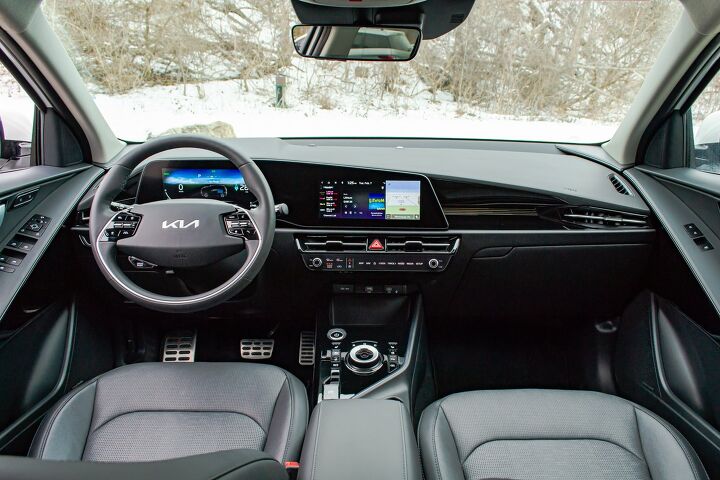



































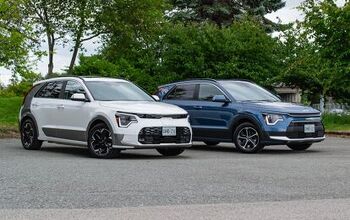


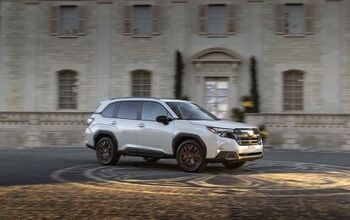



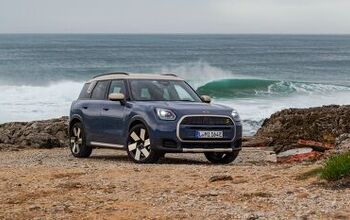

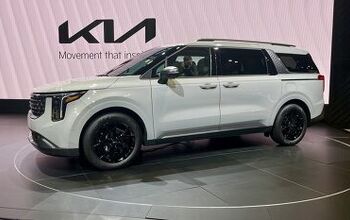

Comments
Join the conversation
The Chevy advantage - no markups at the dealership. Kia - Vancouver Kia asks 24% markup on top of MSRP. Bolt - wait time 6 to 8 months Kia - wait time 1 to 2 years Visited both dealerships intending to purchase March 2023. Chevy was a no brainer.
The Bolt EUV does have heated and ventilated leather seats.